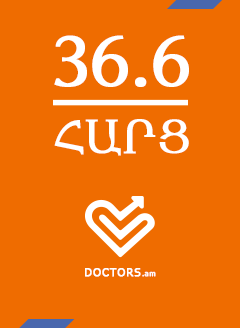Lutembacher's syndrome is a form of congenital heart disease. It is atrial septal defect which involves mitral stenosis. It's a combination of mitral stenosis and a left-to-right atrial shunt - usually an ostium secundum atrial septal defect (ASD). Mitral stenosis is mostly acquired (rheumatic heart disease), as congenital mitral stenosis is very rare. The ASD may be either congenital or iatrogenic, e.g. during percutaneous mitral valvuloplasty.1 There is usually marked right ventricular hypertrophy and failure, and reduced blood flow to the left ventricle because blood flows back to the right atrium through the ASD.
Presentation
It can present at any age.
Patients may remain asymptomatic for many years.
Symptoms are mainly due to the atrial septal defect (ASD). Signs and symptoms vary according to the size of the ASD.
Pulmonary congestion and symptoms due to right ventricular failure: weight gain, ankle oedema, right upper quadrant pain and ascites.
The patient may have a history of rheumatic fever.
Fatigue and reduced exercise tolerance result from decreased systemic blood flow.
Palpitations: these are a common presenting symptom. Predisposition to atrial arrhythmias (atrial fibrillation is very common).
Symptoms caused by mitral stenosis (paroxysmal nocturnal dyspnoea, orthopnoea and haemoptysis) are seen less frequently in Lutembacher's syndrome than in isolated mitral stenosis. They are more common in Lutembacher's syndrome patients with a small ASD.
Signs
Arterial pulse: small volume, may be irregular if atrial arrhythmia.
Jugular venous pulse: distended jugular veins, even in the absence of right heart failure. Large a waves if in sinus rhythm.
Left parasternal heave. May be a tapping apex impulse due to the palpable, loud first heart sound of mitral stenosis.
Heart sounds:
May be features of mitral stenosis (loud first heart sound, opening snap and a mitral early-mid diastolic murmur) but these are variable.
The second heart sound may be widely split.
Third and fourth heart sounds of right ventricular origin may be audible at the left sternal border and are louder with inspiration.
Systolic murmurs:
A pulmonary flow murmur due to increased flow across the pulmonic valve.
Tricuspid regurgitation: lower left parasternal area. Due to the displaced tricuspid valve secondary to right ventricular dilatation (common). Increases with inspiration.
Mid diastolic murmurs:
Left lower sternal border or at apex: increased flow across the tricuspid valve.
Apex: mitral stenosis.
Continuous murmur in the lower right sternal area: continuous shunting of blood across a small ASD in the presence of severe mitral stenosis.
Ascites, hepatomegaly and dependent oedema (if right heart failure).
Treatment
Low-sodium diet
Activity as tolerated
Drugs
Right-sided heart failure: diuretics.
Management of arrhythmias.
Subacute bacterial endocarditis prophylaxis: high risk for infective endocarditis.
Surgical
Surgery is now performed early rather than late because the rates of heart failure and cardiac arrhythmia increase with age. Patients with pulmonary hypertension and irreversibly increased pulmonary vascular resistance (Eisenmenger's syndrome) invariably develop progressive right-sided heart failure after trial septal defect (ASD) closure and die.
Percutaneous closure of the ASD with a clamshell device and mitral valvuloplasty provides a nonsurgical approach to correct these defects.4,5
Mitral valvuloplasty alone can be complicated by development of ASD secondary to trans-septal puncture performed as a part of the procedure.












